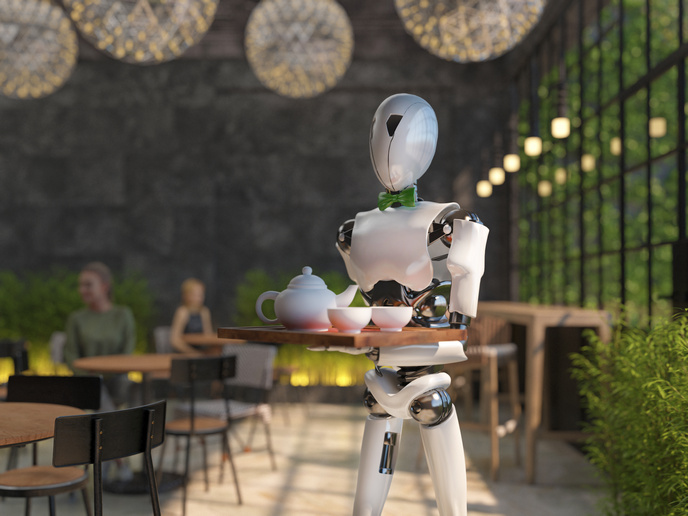Making robots move effortlessly like humans
Humanoid robots will become far more common in the years to come. Yet many still move in a fairly robot-like manner, in comparison to the humans they emulate. Humans and animals move remarkably smoothly, through natural patterns of oscillation. These energy-efficient movements, known as ‘intrinsic dynamics’, include the natural trot four-legged animals fall into while running, and the way muscles stiffen when walking on rigid surfaces. In the EU-funded M-Runners project, researchers at the German Aerospace Center (DLR) and the Technical University of Munich (TUM) developed a tool which can translate intrinsic dynamics into robotic systems. The research will not only make robots run more smoothly on Earth but will help to develop robots to move through difficult situations off-world. “This research focused on elastic robots and how to design and actuate them with minimal control effort,” explains Alin Albu-Schäffer, who is the head of both research groups at DLR and TUM. “In the future this may contribute to developing robots that are very energy efficient, which is essential when exploring other planets where the power supply is limited,” he adds.
Identifying oscillations in locomotion
The new analysis tool is able to find out which movements are the most economical – and efficient – in a system. It was designed to identify intrinsic oscillations of nonlinear systems: such motions which can occur without any actuation effort in an idealised model. The tool can identify natural dynamics of very complex nonlinear systems, including those of a quadruped robot BERT, designed by Albu-Schäffer at DLR. Through the project, the teams identified six different movement patterns for BERT, which are so effortless that in a frictionless world they wouldn’t need any energy to perform. On the real robot, only energy losses due to ground impacts and friction need to be compensated for, but the inter-limb coordination still happens in an effortless way. These movements are similar to the gait of four-legged animals such as walking, hopping and trotting.
Identifying and characterising natural dynamics
The most important result was a better understanding of how to identify and characterise natural dynamics of nonlinear systems. This helped with the design of energy-efficient ‘controllers’, which support intrinsic motions in robotic systems. “In fact, the control concept applied on BERT is to keep the external control input minimal and instead rely on the mechanics of the system itself,” explains Albu-Schäffer. “Trajectories are not ‘forced’ on the system but supports the natural motions that the system inclines to physically,” he says.
Research into robotics in space
The research into space robotics is ongoing, and one version of BERT has already been tested in multiple space missions. “The robot in our institute was controlled by astronauts aboard the ISS as part of the Surface Avatar project,” notes Albu-Schäffer. “These missions mainly investigated the remote-control aspect of using a quadruped for space exploration, which is likewise important to eventually applying BERT in a space context on the Moon or Mars,” he says. The team is currently applying the methods developed through the project to the design of a new humanoid robot, which should run and move faster and more efficiently than today’s robots. There will be applications of these robots for space exploration, but also in everyday jobs – including around the home.
Keywords
M-Runners, robot, humanoid, movement, oscillations, locomotion, natural dynamics, robotics, space







